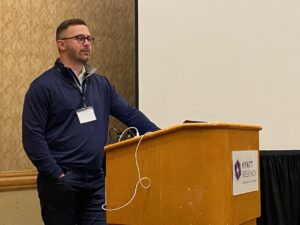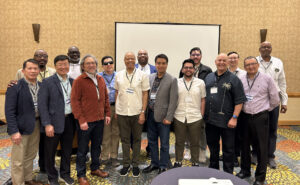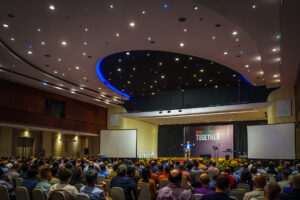
FUERTEVENTURA, Canary Islands (BP)–New arrivals to the Spanish island of Fuerteventura might wonder if they’ve landed on an outpost of the moon. Dirt resembling a lighter version of red Georgia clay covers both mountains and foothills. No trees, no greenery — except plants at the airport sustained by a massive irrigation system.
There is a constant wind blowing off the coast of North Africa to Fuerteventura, which means “strong wind.” The island’s mild weather feels like springtime all year. A bit of paradise?
Not necessarily.
What tourists don’t immediately notice is the dark cloud of restlessness and despair in the hearts of many of its residents. On Fuerteventura’s sister island, Lanzarote, there is a cliff known for suicide deaths. Most of the fatalities are young people who feel trapped and hopeless, missionary Pepe Lopez* says.
There are few native islanders. Most residents are immigrants from neighboring North Africa, some entering the country illegally. Their stay often is temporary. Many use the island as a leap pad to the six other Canary Islands and to mainland Spain and the rest of Europe in order to find better job opportunities.
Before moving to Fuerteventura in 2007, Pepe and his wife Shari* lived on Lanzarote where Shari formed a support system of close friendships. But that hasn’t been the case in Fuerteventura. “It’s harder to gain people’s trust here,” Shari says. And if they do gain that trust, many times their new friends move to another island with more job opportunities.
At least once a year a U.S. church comes to help lead a Vacation Bible School-like camp. In 2008, four summer missionaries spent a couple of months with the Lopezes. But Pepe and Shari need more help from Southern Baptists to reach the lost and lift the cloud of hopelessness hovering over Fuerteventura.
It’s hard for churches to gain the trust of the island’s residents if they make only one trip a year. And trust is a huge barrier to overcome before Christianity can be openly discussed. That barrier is magnified because of a transitory population. If a church makes a return trip, the people they met previously likely will have moved on. It’s a vicious cycle.
Besides two journeymen, the Lopezes are the only missionaries in Fuerteventura, which boasts more goats than people. The couple takes a break from life on the island at least three times a year to re-energize. Other islanders do the same. As for the hopelessness, some residents deal with it, some leave — and some lose the will to live.
The latter group fuels the Lopezes’ urgency to make connections with as many people on the island as possible. Much of their time is spent driving from one end of the nearly 55-mile-long island to the other. Everything is spread out, with a lot of barren land in between.
Despite the obstacles, the Lopezes know this is where God wants them. They’ve purchased a house in Fuerteventura with the intent to continue ministering on the island after they retire.
–30–
*Name changed. Emilee Brandon covered this story for IMB (International Mission Board). To learn more about partnering with missionaries overseas, visit imb.org/main/lead.
















